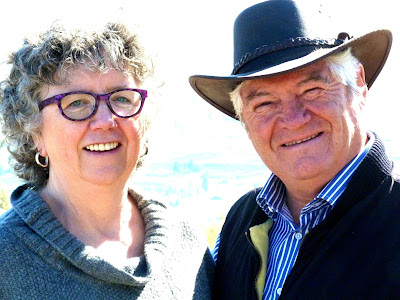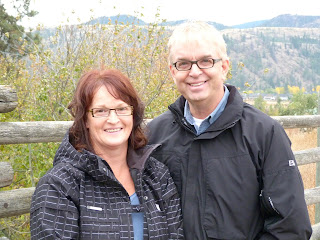Photo: Vanessa Vineyard winemaker Howard Soon
At the All Canadian Wine Championships in June, the 2015 Syrah
from Vanessa Vineyards won a gold medal.
At lunch a few hours after it was judged, it was the talk
among some of the judges. The bottle that had been judged available to taste at
lunch. One judge from Quebec rushed to his telephone to order a case of the
wine.
I was among the judges but not on the panel that tasted the
Vanessa Syrah. I got to taste the wine on my own later, at home.
It is not unusual for the Vanessa wines to create a buzz
whenever they are tasted. The wines are from an exceptional vineyard in the
Similkameen Valley. They were made formerly by Karen Gillis, the winemaker at
Red Rooster Winery.
The winemaker of record now is Howard Soon, who joined Vanessa
shortly after retiring from Sandhill Wines in 2017. There, he had already been
making some wines from Sandhill from Vanessa grapes.
While the vineyard is Vanessa’s best asset, it also has a
treasure in Howard. He is a veteran Okanagan winemaker and his towering status
was recognized recently when he was named to the Order of Canada.
The current released include two wines two wines made on
Howard’s watch and two made by Karen. It is worth noting that they have long
been winemaking colleagues because Andrew Peller Ltd. owns both Sandhill and
Red Rooster.
Here are notes on the wines.
Vanessa Vineyard Viognier 2018 ($24.99
for 325 cases). The wine begins with aromas mingling floral notes with apricot.
On the palate, the flavours are intense – apricot, nectarine, ripe apple
supported by a spine of minerality. The finish is dry and the fruit flavours
are persistent. 93.
Vanessa Vineyard Rosé 2018 ($24.99
for 195 cases). This is fashionable pale (Howard thought the previous vintage
too dark). It is 67% Syrah and 33% Merlot. The grapes were picked early
precisely to yield a crisp wine light in colour. It has aromas of raspberry
leading to flavours of raspberry and strawberry. It has a dry finish. 90.
Vanessa Vineyard Cabernet Franc 2016 ($49.99
for 170 cases). This is a bold red (15.5% alcohol) that was aged 20 months in
French and American oak barrels. It begins with intense aromas of raspberry and
blackberry leading to intense flavours of plum and fig with notes of chocolate.
The alcohol gives the wine a swaggering warmth appealing to lovers of big reds.
92.
Vanessa Vineyard Syrah 2015 ($34.99
for 445 cases). This is a textbook Syrah beginning with aromas of plum, black
cherry and deli meats. On the palate, there are bold flavours of plum, fig and
black pepper mingled with vanilla, dark chocolate and leather. 93.










































